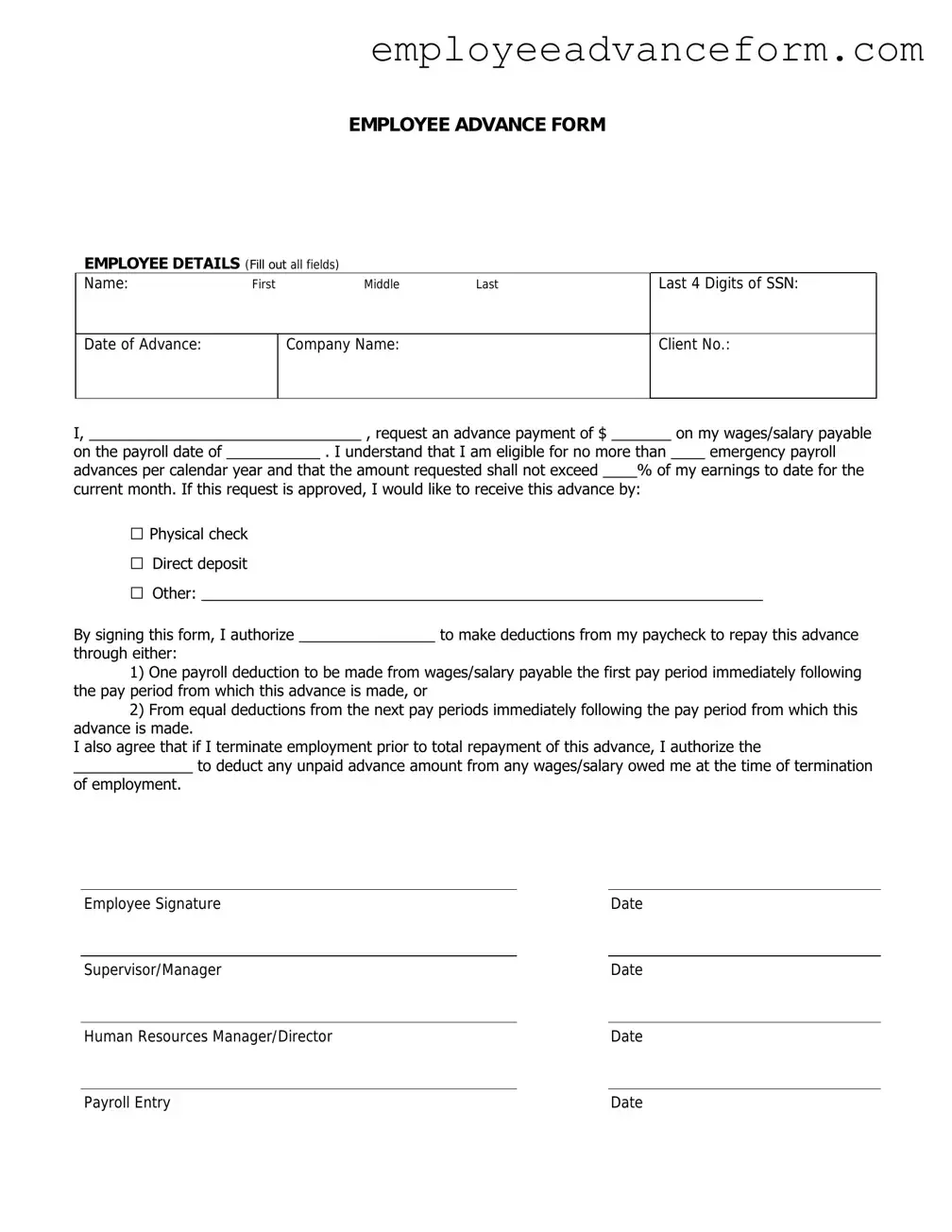Similar forms
- Expense Reimbursement Form: This document allows employees to request reimbursement for expenses incurred while performing work-related duties. Similar to the Employee Advance form, it requires detailed descriptions of the expenses and receipts for verification.
- Travel Authorization Form: Employees must fill out this form to seek approval for business travel. Like the Employee Advance form, it outlines the purpose of travel and estimated costs, ensuring that expenses are pre-approved.
- Payroll Advance Request: This document permits employees to request an advance on their paycheck. Similar to the Employee Advance form, it involves a formal request process and requires justification for the advance.
- Loan Application Form: Employees seeking a personal loan from the employer use this form. It is similar in that it requires personal information and a clear explanation of the loan purpose, much like the advance request.
- Employment Verification Form: Employers use this document to confirm the employment eligibility and identity of new hires in Washington. For detailed instructions on how to complete this form in compliance with employment laws, visit legalpdf.org.
- Benefit Claim Form: This form is used to claim benefits such as health insurance or disability. It shares similarities with the Employee Advance form in that both require supporting documentation and a clear statement of need.
- Purchase Order Request: Employees use this document to request the purchase of goods or services. Like the Employee Advance form, it details the items needed and the reasons for the purchase, ensuring accountability.
- Leave of Absence Request: This form allows employees to formally request time off from work. It is similar to the Employee Advance form as it requires a reason for the leave and may involve a financial aspect if paid leave is requested.
